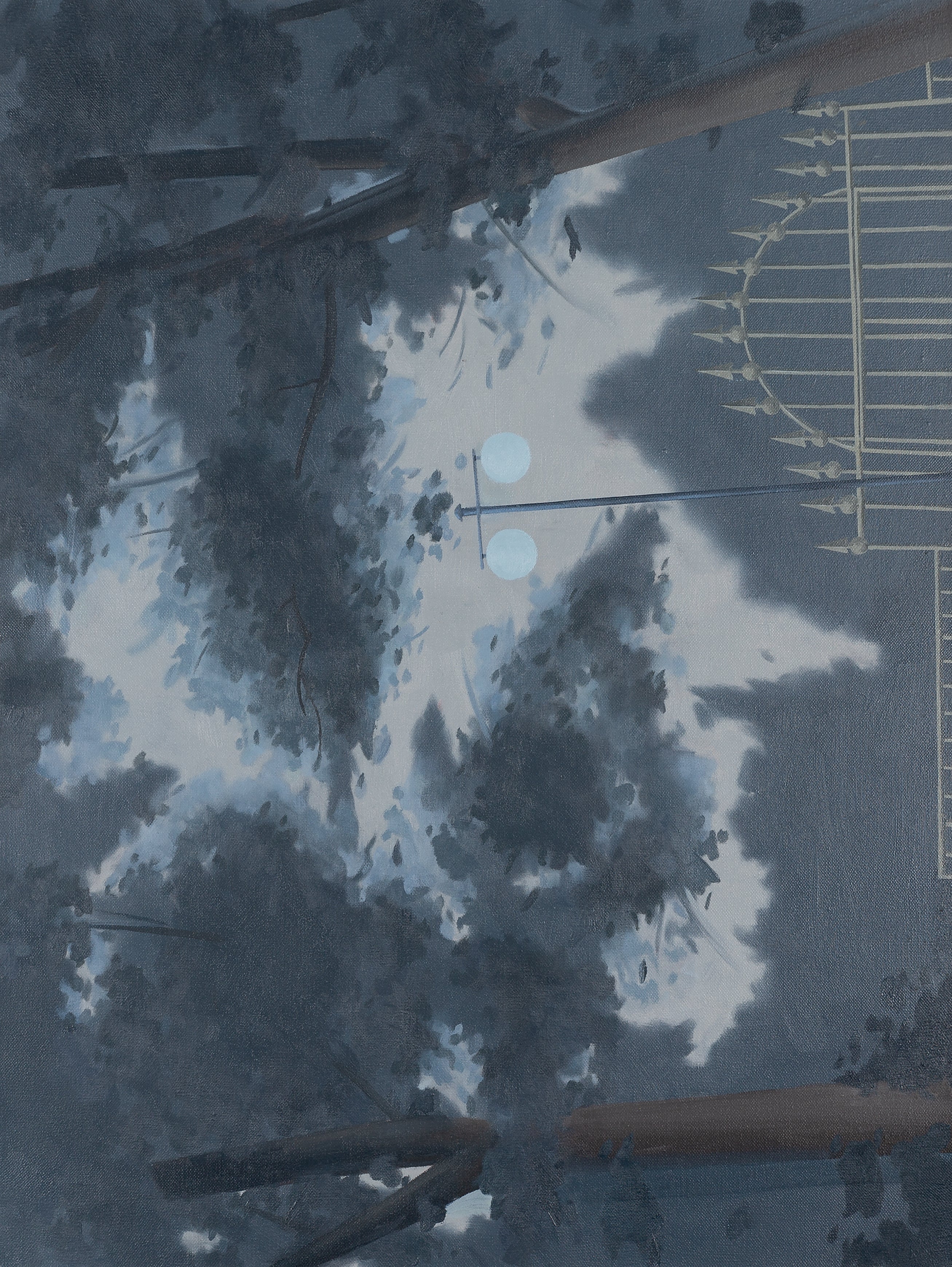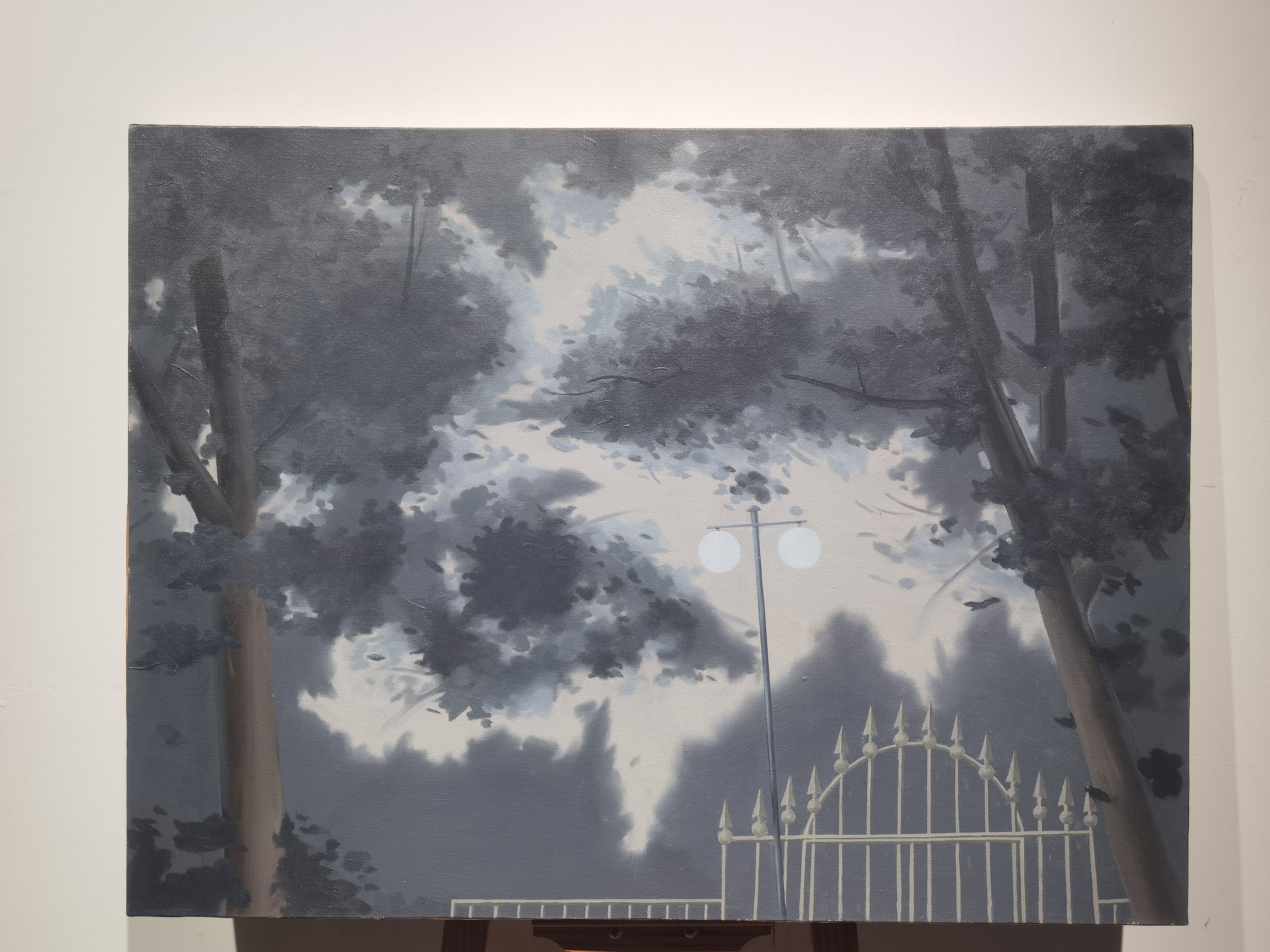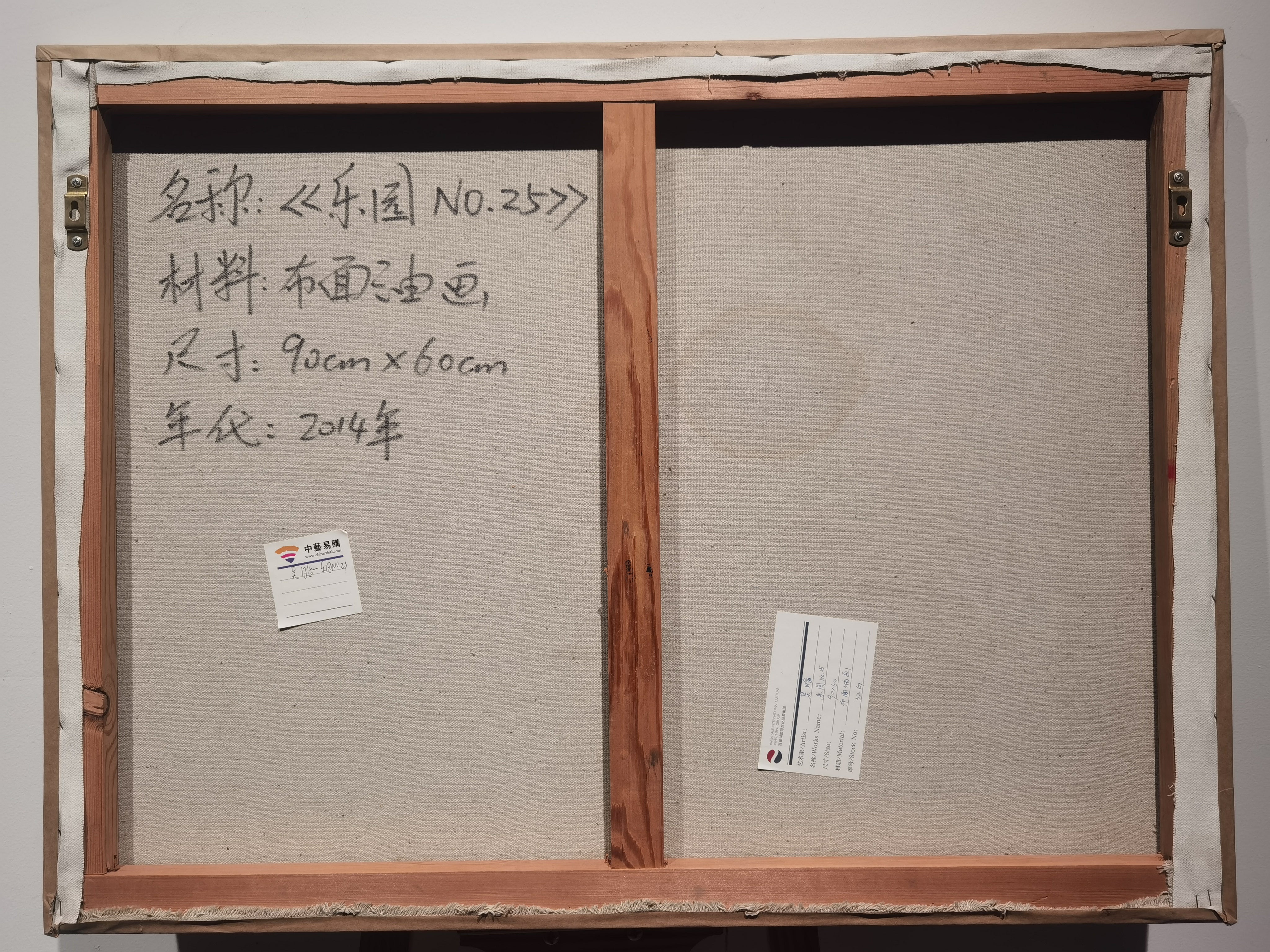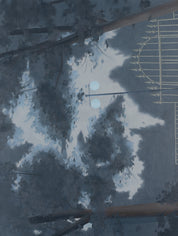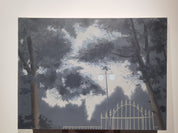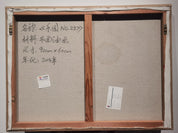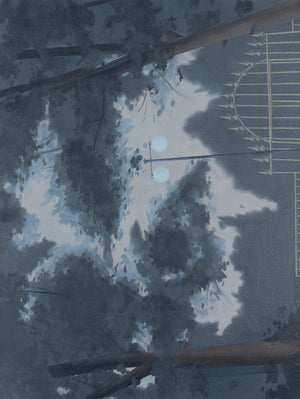Paradise NO.25
Han Wu
Artwork Details
Artwork Description
Title: Paradise NO.25
Artist: Han Wu
Date: 2014
Medium: Oil on canvas
Dimensions: 23.6 x 35.4 in (60 x 90 cm)
1. Artwork Identification
Paradise NO.25 is a serene yet enigmatic oil on canvas by Han Wu, measuring 60 x 90 cm. The composition features a quiet nocturnal landscape framed by darkened tree trunks and dense foliage, with a softly glowing pair of spherical streetlamps and a wrought-iron gate that suggest a liminal space—perhaps the entrance to a garden or a private realm. Executed with tonal restraint, the painting bathes the viewer in a twilight atmosphere that feels both familiar and uncanny.
2. Artistic Style and Influences
Han Wu’s style in this work leans toward magical realism with a meditative tonal palette and careful modulation of light and shadow. The atmospheric depth and moody quietude evoke comparisons to the surreal calm of René Magritte’s nocturnes, while the formal clarity and focus on stillness suggest influence from Symbolist traditions. Wu’s precise control over form and contrast allows the work to function both as landscape and metaphor.
3. Historical Context
Created in 2014, Paradise NO.25 reflects a contemporary engagement with memory, place, and emotional resonance within Chinese art. During this period, many artists began revisiting themes of solitude and spatial poetics amidst rapid urbanization. Wu’s decision to strip the scene of human figures and overt narrative enhances the psychological tension of the painting, echoing broader cultural shifts toward introspection and individualism in art.
4. Provenance
Provenance documentation can be provided upon contact.
5. Condition and Conservation
The painting is in very good condition. The canvas is taut with no visible warping or damage. The paint layer is intact, showing no signs of cracking, fading, or restoration. Surface gloss and texture are consistent and well-preserved.
6. Artistic Significance
Paradise NO.25 stands as a compelling example of Han Wu’s ability to transform a quiet scene into a portal of emotional depth. The work’s subtle symbolism, masterful tonal control, and dreamlike quality invite prolonged contemplation. As part of the Paradise series, it represents a sustained inquiry into the boundaries between the real and the imagined—an inquiry that resonates deeply in both Eastern and Western contemporary art dialogues.

